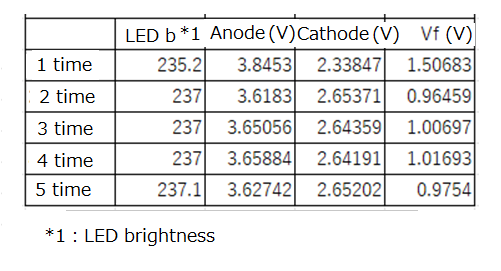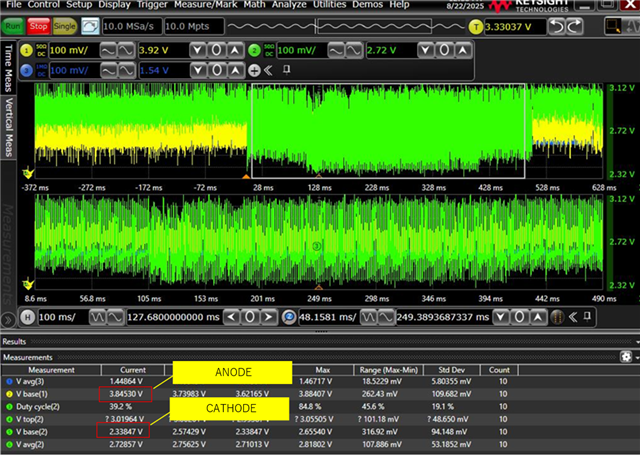Tool/software:
Hello,
I am an FAE at a distributor that handles TI products.
I received a question from my customers about the TLC5940.
When I use a TLC5940 to illuminate an LED five times in succession, the brightness changes between the first and second illuminations.
There is almost no change in brightness from the second illumination onwards.
The figure below shows the results of measuring the LED anode and cathode voltage (Vf) after five illuminations.
The LED brightness is the value captured by the sensor when the LED is illuminated.
The conditions for illuminating the LED were the same all five times, but the Vf measured after the first illumination was significantly different.
(Question 1)
Is it possible for Vf to fluctuate even though the GS and DC registers are fixed?
(Question 2)
Even though Vf decreases after the second illumination, the measured brightness increases.
Are there any factors other than Vf that cause the brightness to differ from the second illumination onwards?
Best regards,



